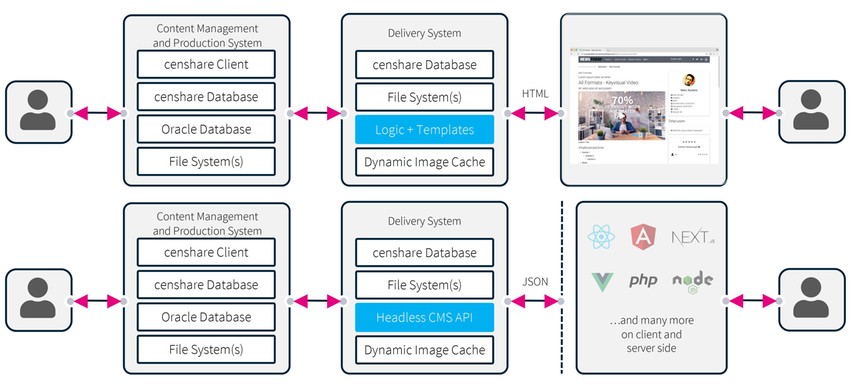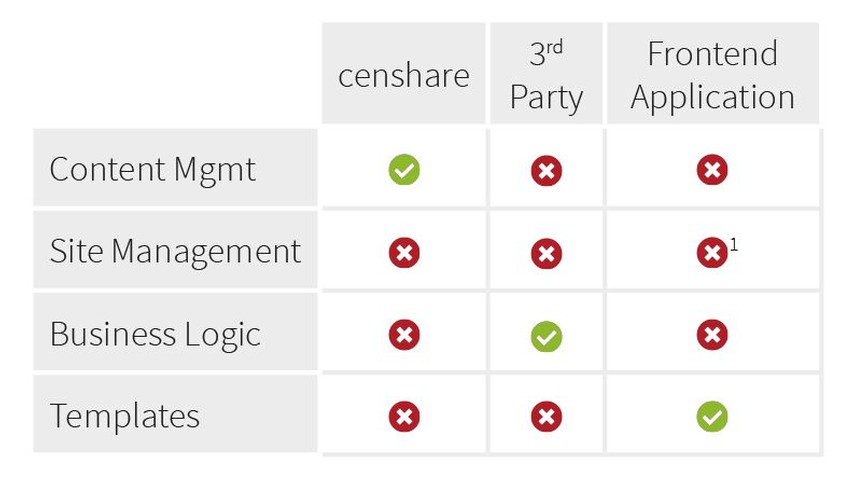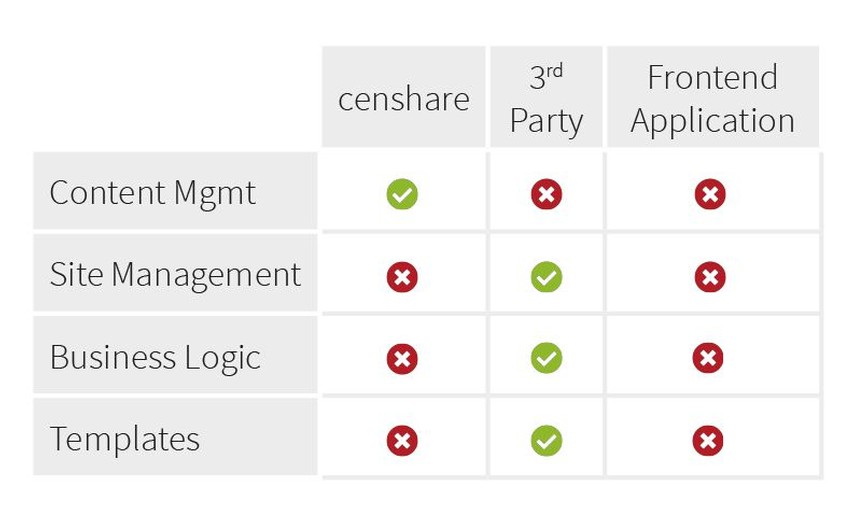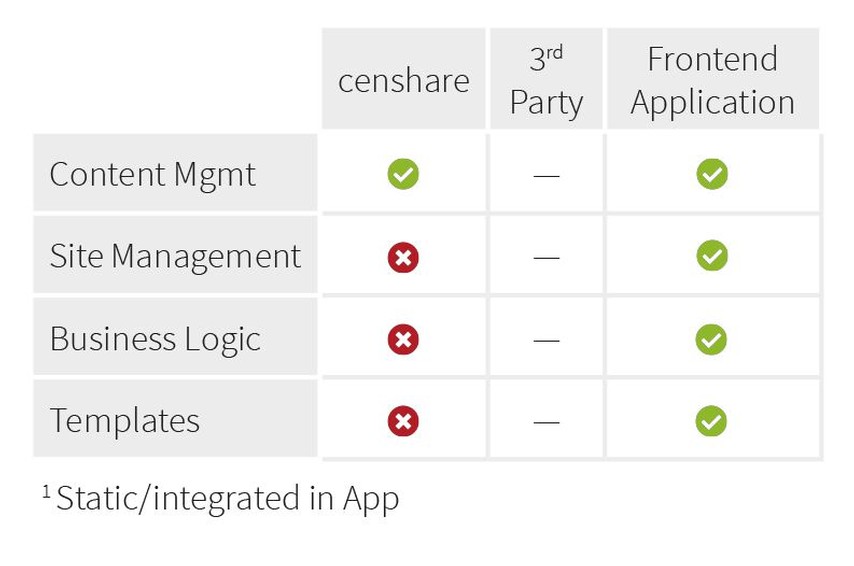Inhaltsverzeichnis
- Delivering more freedom to create
- Video AI – Automatically enrich metadata of video content
- Use Cases for Video AI
- External Authentication (BETA)
- External Authentication – How it works
- Improvements to the standard workspace configuration
- Meet Ruy Ramos, the PM behind Dedicated Solutions
- Create Translation Reports
- censhare Goes Headless
- HCMS powers a Web Application
- HCMS enables an ‘Asset Picker’ for external solutions
- HCMS powers an external WCMS
- HCMS as basis for a framework for innovative solution development
- Further Enhancements
- censhare Java Client and Adobe CC 2020 Plugin for macOS Catalina and Microsoft Windows
- Word and Character Count in the Content Editor
- Image Orientation
- Improvements to Google Vision AI Integration
Download the Release Summary 2020.1 as PDF
Delivering more freedom to create
Welcome to censhare version 2020.1. It contains more features and functions that enable you to react faster and smarter in a world that seems to drown in content.
Take video content. In 2019, about500 hours of video were uploaded every minute to Youtube ( Statista, online ). That are many videos, and marketers are surely responsible for a big share of all these clips.
But wait! Before the videos can be uploaded to Youtube, they need to be planned and produced, reviewed and edited. Once published, they need to be made available to everyone in the organization to make the most from the high video production cost.
Advanced marketers use a central content store like censhare to store all their clips. But it still can be challenging to find the clips you’re looking for especially when they have not been systematically enriched with useful metadata. And so, users around the world keep wading through endless lists of search results in the hope to find the clip they’re looking for.
The new censhare release puts an end to this quest.
With censhare 2020.1 you can automatically enrich the metadata of all your video content with transcripts, keywords and descriptions. You can also automatically detect text within the clip and flag videos that may not be suitable for everyone.
Just think of all the time (and money) you’re going to save from now on. What are you going to use it for? I guess you will create more and better content and campaigns, and faster. This is exactly the rationale behind our company vision: ‘Freedom to Create’.
But it’s not just the big, glitzy features that help marketers with their daily duties. Small improvements can make a big difference, too.
Good examples for this are the improvements to the properties dialog for commonly used asset types like images, videos, and product data: The data has been split up into tabs that show data that are relevant for the respective asset type. This makes it much easier to edit that data. Read all about it .
Our relentless development team also addressed bugs and issues that were present in previous releases of censhare.
This summary shares the most important changes for release 2020.1 which we launched on 20th March 2020.
The next release will be 2020.2 planned for a launch this summer. Stay tuned!
Video AI – Automatically enrich metadata of video content
Automatically create full transcripts for any video asset in censhare, resulting in a pretty accurate text of the voice track, complete with time stamps.
Video content is extremely popular and effective as a marketing tool ( Biteable, online ) but making best use of such content has been difficult. To assess the content and meaning required a review by a human who had to watch the video, summarize its content, find the right keywords to tag the content and possibly also do a transcript. And that’s a time-consuming process.
With the recent introduction of powerful AI/ML tools, assessing video content has become much easier.
With censhare 2020.1 we enable you to automatically create the perfect foundation for making best use of all your video content. By extending our existing integration with Google AI to video assets, you can better find, manage and use videos.
This works for videos of any lengthand video repositories of any size.
The feature can create full transcripts and identify keywords, tag each video automatically and detect and flag explicit scenes that may be unsuitable for some audiences. It can also detect text that appears within the clip.
What’s more, it can identify scenes (shot changes) within a clip so you can quickly understand the structure of the clip.
In the future, the service will also support object recognition and logo recognition.
Use Cases for Video AI
Here are some use cases for automatically assessing video content. Of course, you may have your own ideas on how to use that. We think there are countless opportunities from systematic digitization of video archives to legal applications and automated processing of user generated content. This table is just meant to be a starting point to inspire you.
Video AI Feature: Transcript
Creates a text representation of the words being spoken in a clip
Use cases
In general, keyword-based full text search makes video content easily findable and significantly increases efficiency because users no longer have to know or remember the content of a clip or wade through long lists of results to find what they are looking for
Helps validating messages being used (e.g., correctness of product information)
Provides a solid foundation for translating and localizing video content
Video AI Feature: Detect text that appears in a clip
Creates a list of text elements that appear in a clip
Use cases
In general, enhance metadata of the clip to make it findable and understand its content
Identify content by interpreting existing subtitles (e.g., for clips that have been translated)
Identify persons and related information if shown in the video (e.g., in the lower third)
Identify products, product categories and related information (if mentioned in the video)
Helps validating messages being shown (e.g., correctness of product information)
Process user generated content (e.g., users sending in videos containing product codes)
Analyze pre-roll content (e.g., reference numbers shown on a text slide before the clip starts)
Video AI Feature: Keyword identification
Creates a list of keywords that describe the content of the clip
Use case
Tag video assets with matching keywords to improve the ability to find clips dealing with a specific topic
Video AI Feature: Detect and flag explicit scenes
Identifies whether scenes may contain explicit content
Use cases
Shape your video content to reduce or remove explicit scenes
Prevent the risk of damaging the brand through unsuitable videos
Potential improvement of SEO page rank by presenting just videos that are suitable for all audiences
Video AI Feature: Identify scenes (shot changes) within a clip
Creates a list of time stamps for each scene
Use case
Quickly understand the structure of the clip
External Authentication (BETA)
The software industry undergoes heavy changes and is increasingly shifting from a monolithic approach – where all features and functions are provided by a single vendor – towards a widely modularized approach where each software vendor focuses on key competence areas while leaving commodity services to expert providers.
censhare is not different in this respect. That’s why we have reviewed all capabilities and features to identify potential areas of improvement. We found authentications to be a perfect candidate.
Our goal was to improve usability for censhare users – especially by enabling Single-Sign-On – while reaching a new level of security. Mainstream technology is ideal to achieve this goal as it leaves the sensitive topic of authentication to those who are experts at this.
Not only will this provide state-of-the-art security mechanisms, but it will also ease the integration of censhare with existing enterprise authentication, authorization, and identity management solutions.
Starting with censhare 2020.1, we support Keycloak for authentication. It offers leading identity and access management capabilities in addition to the integrated functions of censhare, so the existing authentication remains unaffected by this.
If you opt to use External Authentication, you will generally benefit from higher flexibility for authentication and can use the following authentication methods:
Single Sign-On (SSO). Use one username/password combination across all applications belonging to the same realm
LDAP integration. Verify login information through LDAP
Support for Kerberos. This common network authentication protocol has been designed to provide strong authentication and improved security for users and client/server applications
SAML connection of the Java Client. This enables a direct communication between the client and the webservice
Multitenancy per realm. Use the same authentication for various brands
As clients and prospects have repeatedly asked for these additional authentication methods, we make this integration available as ‘beta’ software (see text box), enabling you to try the new feature and to shape future versions of censhare.
If interested, please contact the product management team to get enrolled into the beta program.
What’s a Beta?
A ‘beta version’ describes the software development phase that begins when the software is feature complete but likely to contain a number of known or unknown bugs. Users may also experience speed or performance issues. The focus of beta testing is reducing impacts on users, often incorporating usability testing.
Beta testers are people who test beta software and typically provide feedback on and report issues of the beta software.
At censhare, we will handle your bug reports with high priority, and your feedback will shape the further development of the respective feature or function.
External Authentication – How it works
Logging in with External Authentication is a four-step process.
The browser of a user accesses a page using censhare webpack (WP). This asks for a valid Access Token from Keycloak to censhare’s static resource server. In a typical SSO scenario, the user already has a valid Access Token and will be able to access censhare.
If there is no Access Token, or if its invalid, the user will be re-directed to a login page on Keycloak which will ask for proper credentials.
Keycloak validates the login information against the selected identity provider. This can be, for example, an LDAP server.
If the login information is correct Keycloak will provide a (usually short-lived) Access Token that authenticates and allows to identify the user and forward him to the requested page which will be personalized according to the respective access rights.
With External Authentication we introduce Keycloak which is responsible for the actual authentication against supporting services, e.g. a LDAP server. It will tell censhare whether the user may access censhare. Keycloak runs in the Intranet and provides an ID Token to censhare’s standalone webserver.
Improvements to the standard workspace configuration
With censhare release 2019.3, we introduced the ‘dedicated solutions’ project that reviews, evaluates, and improves all UX elements and workflows while considering best practices from projects around the world and specific customer requests. This helps setting up censhare faster for new customers and makes it more intuitive to use for existing customers.
Feedback from partners, customers, and industry analysts has been very positive and confirms that we’re on the right track with this.
In this release, we have looked at the properties associated with an asset and the way we show this information. We split the information into meaningful tabs for the most commonly used asset types:
Images
Video
3D Model
Audio
Product
Item
Category
Article
Text
Project
Campaign
Tactic
For example, when opening the properties of an image you will see tabs for EXIF, IPTC, and XMP (along with other tabs). This data is used by photographers and stock photo agencies to provide metadata. When opening product properties, however, you will see different tabs like localization, classification, and properties.
This makes it easier to get directly to the data that needs to be edited.
When editing properties of an asset, you will see now tabs that show specific properties that are relevant for the respective asset type, for example for images (top) or products (bottom). This makes it easier to get directly to the data that needs to be edited.
Meet Ruy Ramos, the PM behind Dedicated Solutions

Ruy Ramos is a Product Manager at censhare and covers the further development of censhare towards dedicated solutions. He joined the company in 2015 and has managed countless censhare projects across the world before moving to the product management team. He lives and works in Stockholm, Sweden, and likes to be called just ‘Ruy’.
We called Ruy to understand the rationale behind dedicated solutions for censhare.
censhare: In December 2019, censhare launched dedicated solutions. What’s been the main driver for this?
Ruy: censhare has always been a software company with strong customer focus. We took great pride in tailoring our solution to each customer and address specific requirements. There were no standardized third-party solutions available, and we simply had to do it all on our own – backed by our customers who accepted waiting for ‘their’ version of censhare.
This has changed rapidly as customers have matured. They have different needs today. They look for flawless user experience, a clear user interface, and generally faster availability. Complete customization is not as important anymore. Many organizations can accept using default processes or slightly changed processes.
censhare: How do the new dedicated solutions relate to this?
Ruy: Dedicated solutions address the changed needs in two ways.
First, censhare now comes with predefined workflows, asset types, user roles, and data models. These have been defined after reviewing countless successful global projects. For example, for censhare PIM we carefully analyzed our PIM installations and identified their similarities.
Second, we have reviewed all processes and screens and checked them against real-world use cases. We asked ourselves for each button and each screen: Does it make sense? Is the wording correct? How can this be improved to help the user accomplish a task? We took the results and began to improve the UX and UI by applying the learnings to the standard workspace.
I am confident that these represent the ‘Best Practices’ for each product – DAM, PIM, and CMS.
So far, the feedback has been great. The experience is generally better, and the interface is much more intuitive to use. I’d say this is the best censhare we ever had. It can be implemented much faster because we have a solid foundation to build upon and just need to tweak the configuration as needed. Customers and partners like that. A lot.
censhare: Why do you release the changes step by step?
Ruy: (laughs) Of course, it would be perfect to do one big relaunch, but this would have delayed the availability of the improvements by about 18 months. We felt that the improvements were so valuable that they justified a faster launch and decided for an incremental approach.
censhare: When will this project be finished?
Ruy: It’s a continuous effort that will probably never end. The essential parts are out now, but there’s more to come, and a dedicated team looks after the project. It’ll be exciting!
Create Translation Reports
For the selected text assets, a translation report shows the amount of confirmed (i.e., approved) translations, the amount of translations with existing pretranslations and the amount of texts that definitely need to be translated. The statistics can be displayed for characters (shown above) or words.
Many marketers work in global organizations that address local markets with translated marketing content. censhare has traditionally been strong in translation and variants management and understands the related workflows very well.
A key task is the estimation of the translation effort in terms of time and costs which are usually directly linked to the number of words that need to be translated. Achieving a correct estimate is not as easy as it seems because the increasing use of translation memories affects the effort for a specific translation job. Such systems check whether one or more sentences or phrases have been translated already and thus don’t need to be translated again.
Starting with censhare 2020.1, you can create reports covering your translation projects. These reports show the number of confirmed, pretranslated and to be translated words or characters for selected assets per language combination.
To create a report, simply perform a search and filter for the relevant text assets. Then select the assets that you would like to include in the report. You can also use a stored search for this. From the ‘Page actions’ menu, select Translations > Translation report to create and display the report. Translation statistics are provided by language combination. By default, the reports are based on words.
You can download translation reports and share them, for example, with translation agencies when inquiring for a cost estimate.
censhare Goes Headless
censhare’s Web CMS (top) has a powerful twin now: Headless CMS (bottom), that serves content as JSON via an API to any external service, app or client. This enables countless new use cases for censhare customers.
Going “headless” has become a hot topic in content management by now, but many customers have not yet realized the potential of this new approach by censhare.
Traditionally, censhare could be used as a Web Content Management System (WCMS) that managed the entire delivery of the content from the central content hub to online channels (which inspired the name for our WCMS). Using logic and templates, content– for example, copy and images – would be transformed into HTML pages and served to the user.
Typical use cases were holistic website management (all content is served by censhare), brand portals (selected content is served by censhare to selected user groups), and personalized content (selected content is served to individual users based on user preferences or interest profile).
Headless Content Management (HCMS) describes a different approach. While the censhare system still serves the actual content – copy and images – it is served via an API as JSON to any application or service that is allowed to request the respective digital assets.
We see four typical use cases that are explained in the text below:
HCMS powers a Web Application
Content is hosted centrally in censhare, but business logic and templates are managed externally. This could be, for example, a mobile app installed on the user’s device that will take care of the actual delivery of the content.
HCMS enables an ‘Asset Picker’ for external solutions
Content is hosted centrally in censhare. Users on a 3rd party solution, e.g. an advertising platform, can pick assets (e.g., an image) from censhare in completely seamless user experience.
HCMS powers an external WCMS
Content is hosted centrally in censhare but business logic, template management, site management, and page delivery are performed by a 3rd party WCMS through a connector that can access the assets in censhare.
HCMS as basis for a framework for innovative solution development
A mobile app or website can perform content and site management by directly interacting with censhare through the HCMS API. Effectively, this can be used to develop fully customized censhare client functionalities for special ‘lightweight’ use cases.
Further Enhancements
censhare Java Client and Adobe CC 2020 Plugin for macOS Catalina and Microsoft Windows
In October 2019, Apple released version 10.15 of macOS (‘Catalina’), the desktop operating system for Apple Macintosh computers.
A notable change was made to Gatekeeper, which now requires all Mac apps, installer packages, and kernel extensions to be “notarized” by Apple in order to run on Catalina.
This affects the censhare Java Client as well as our Adobe CC Plugin.
The Java Client will be notarized from censhare 2019.3.2 and subsequent versions.
The Adobe CC 2020 Plugin will be compatible starting with version 2.9.1, and it will be made available for Microsoft Windows as well.
The planned release date for both updates is March 27, 2020.
Word and Character Count in the Content Editor
You can now automatically count the words and characters in the Content Editor. When editing a document, just take a look at the widget on the right-hand side where you will find a new tab called ‘Properties’. It shows:
Word count: Number of words in the text, excluding XML tags
Character count: Number of characters in text, excluding XML tags
File length: Total number of characters, including XML tags
Image Orientation
When searching for images you often have a specific image orientation in mind that matches your creative idea.
You can now automatically calculate the actual image orientation to describe whether the image is a landscape, portrait or square format. This is done by assessing the actual vertical and horizontal dimensions (expressed in pixels).
For existing assets, a new asset version is needed for the property to be calculated.
Please note that the calculation provides just an additional data point; many cameras capture the image orientation at the time of shooting in the original EXIF image metadata. This data can also be used to understand the image orientation.
Improvements to Google Vision AI Integration
Our integration with Google Vision AI has been offering extraordinary image recognition capabilities to censhare customers for a while by now. However, some customers with large image repositories reported that the service sometimes may respond slowly which may be related to the heavy load caused by submitting high-resolution images for analysis.
To avoid such issues and generally speed up processing, you can now define which storage item shall be sent to Google Vision AI for analysis (master, preview, thumbnail or custom). This significantly improves response times.
What’s more, you can still define the master file as a fallback in case the defined storage item does not exist.
For more information please have a look at our documentation .
You will find dedicated information about included features, release notes, known issues and system requirements.
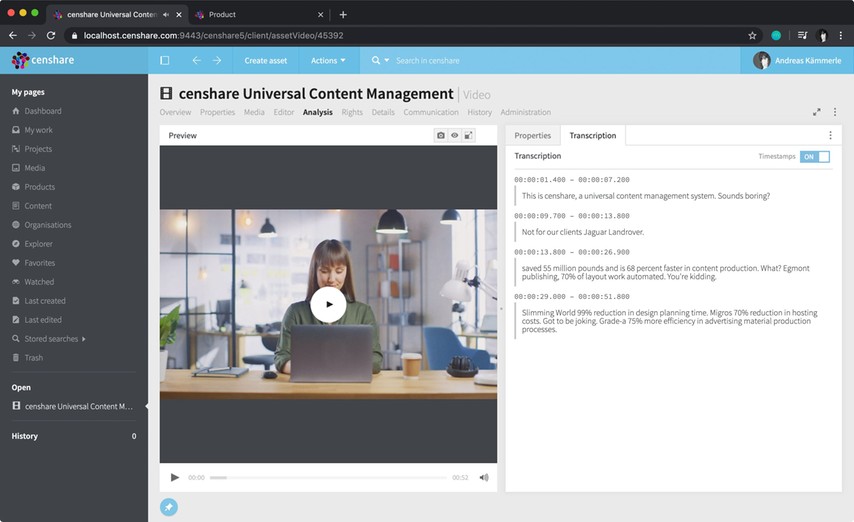
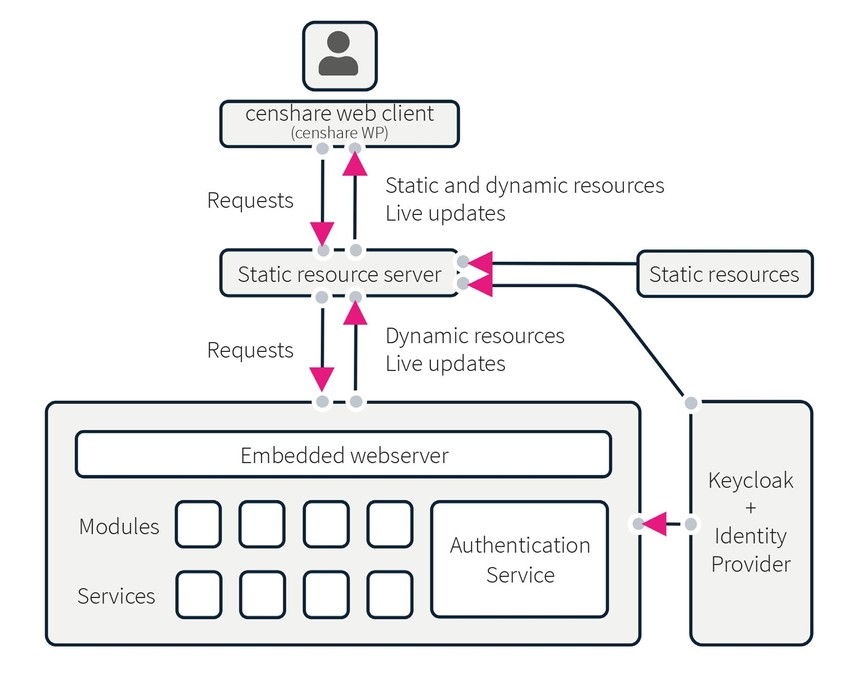
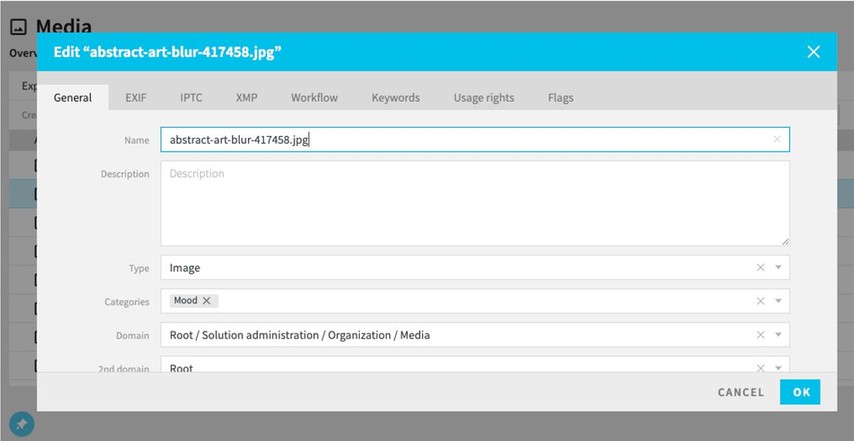
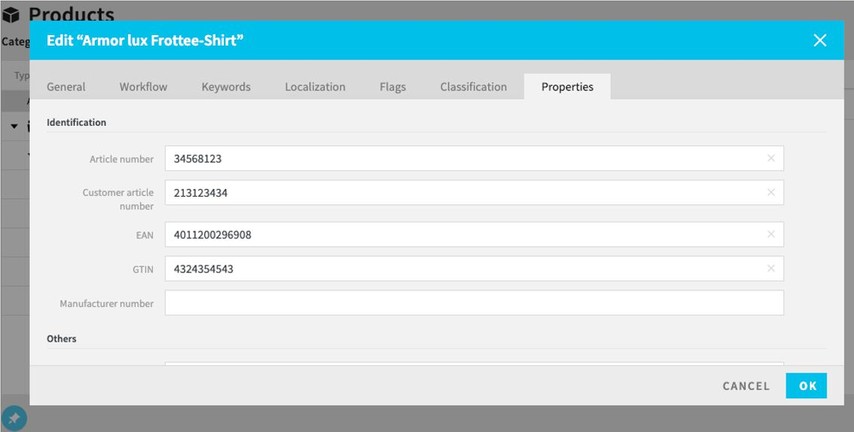
.jpg)
